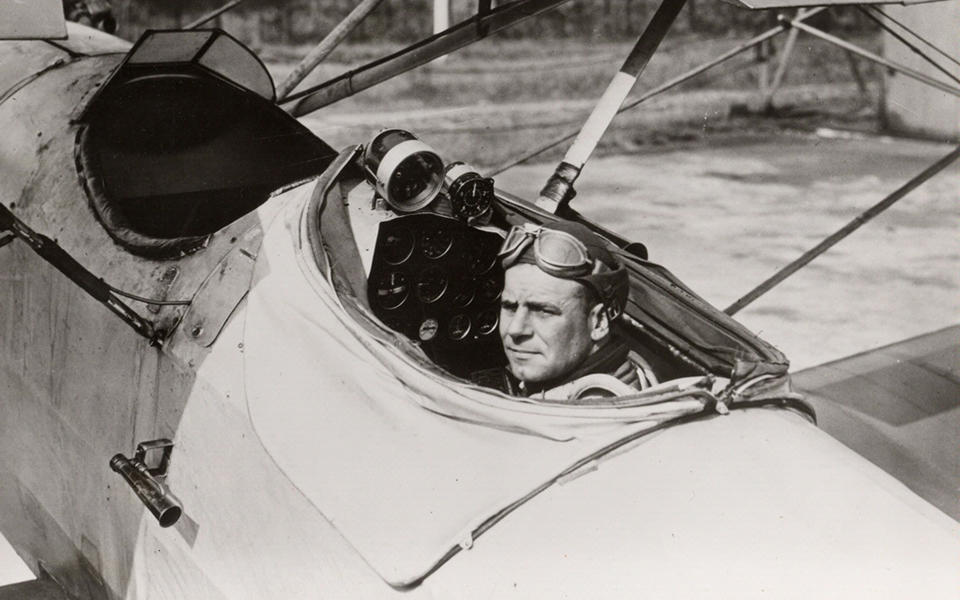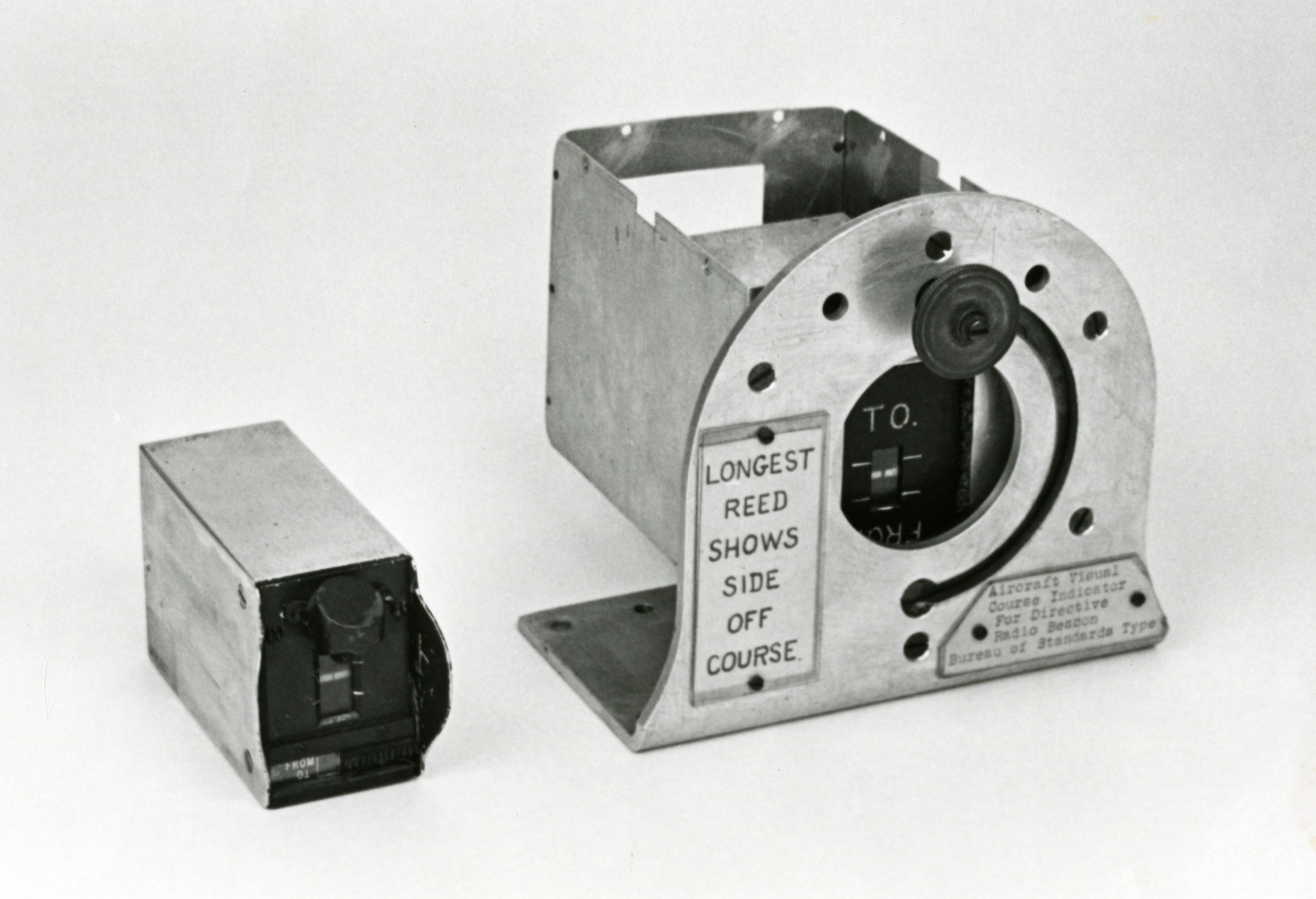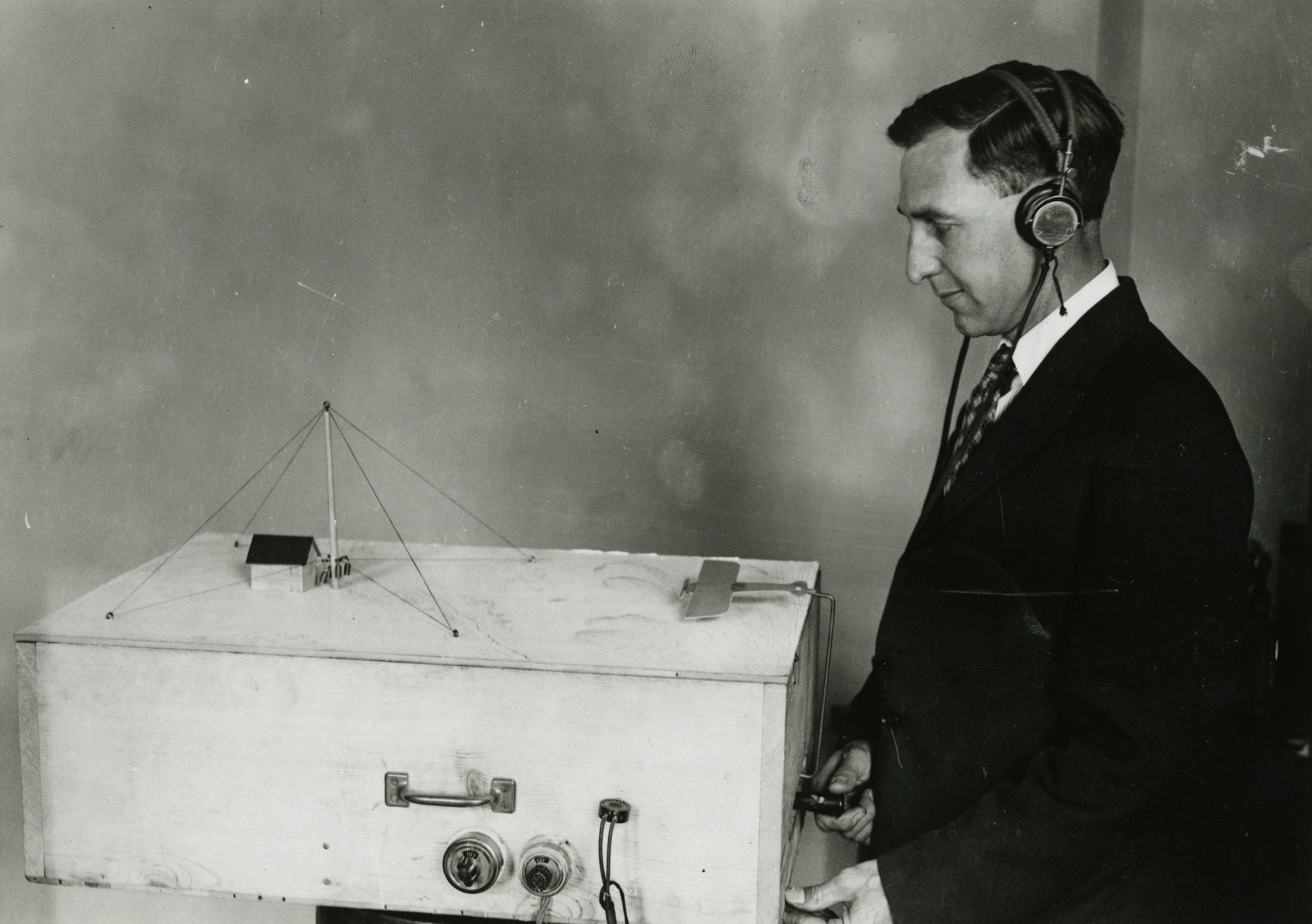Taking Measure
Just a Standard Blog

Jimmy Doolittle in the aircraft used for the first blind landing in 1929.
As portrayed by movie star Spencer Tracy in Thirty Seconds Over Tokyo, pilot James (Jimmy) Doolittle led the 1942 air raid on Japan that lifted American spirits in early World War II, winning fame and the Medal of Honor. He eventually became a four-star general.
Long before Doolittle became a legend, the National Bureau of Standards, now the National Institute of Standards and Technology (NIST), helped the young lieutenant achieve another feat of aircraft derring-do.
In the early years of aviation, flying was experimental and tricky, and often dangerous. Many flight instruments and navigational aids were developed, but in the late 1920s pilots still could not know their exact position in the air. They had to guess by looking outside the plane at landmarks and the ground, a potentially life-threatening challenge when landing. Pilots simply could not fly in fog.
Pilots somehow needed to get accurate 3D guidance to know their aircrafts’ height and distance from the airfield, line up with the runway, and descend gradually for a safe landing.
NIST’s contributions to the development of radio led to research on radio aids to air navigation. Among other innovations, NIST researchers designed runway beacons to transmit radio signals that could be picked up by a plane’s radiotelephone receiver. The system mapped out routes that a pilot could follow by looking at visual indicators in the cockpit.
NIST contributed this system to 1929 fog landing experiments arranged by the Guggenheim Fund for the Promotion of Aeronautics.
NIST’s radio range localizing beacon, to indicate runway direction, and marker beacon, to indicate longitudinal position along the runway approach, were installed at Mitchel Field in Garden City, Long Island, New York. The cockpit instrument display was a set of two metal reeds. When the plane was on course, the two reeds appeared to be the same length. When the plane was too far right or left, the reed on that side was longer, and the pilot would turn the plane toward the shorter reed.

On September 24, 1929, Lt. Doolittle of the U.S. Army Air Corps, sitting under a cockpit hood to prevent him from seeing outside the NY-2 Husky aircraft, performed a series of flights and landings, including several in heavy fog. A safety officer, hoodless in the plane’s forward cockpit, provided backup control.
This first “blind” takeoff, 15-minute flight around the airfield, and landing — all by instruments alone — is commemorated by an Institute of Electrical and Electronics Engineers – American Institute of Aeronautics and Astronautics Milestone plaque at the Cradle of Aviation Museum in Garden City.
“Doolittle’s successful blind flight and landing demonstrated that having and being able to use accurate and reliable instruments was the key to safe flying, under near-zero visibility conditions … contrary to the belief of many pilots at the time that being able to fly, ‘by the seat of my pants,’ was the more important skill,” the online citation states.
“Crucial to the success of the flight … was the radio range and marker beacon developed by the Bureau of Standards,” the citation notes. Additional technical details can be found in the milestone proposal.
Doolittle used then-standard cockpit instruments and several other, newer ones, including an artificial horizon display, a directional gyroscope, and an altimeter that could be corrected for changes in barometric pressure based on two-way radio communication with the ground.
The altimeter’s measurements of height above the ground were off by a probable 9 to 12 meters (30 to 40 feet), resulting in hard landings, according to a 1930 NIST paper.
“The lessons learned from these demonstrations were many,” NIST researchers wrote. “Perhaps the most important was that the problem of securing suitable indications of the true height above ground still required attention. The need for two-way communication with the ground in order to correct the altimeter to the proper barometric pressure seemed excessive. In addition, the absolute height could not be determined to the proper accuracy.”

Doolittle’s demonstrations thus pointed to the need for another landing aid. In separate experiments, NIST researchers were working on a solution: a sloping radio beam, a sort of invisible ramp, to provide a more exact landing path. This transmitter radiated a directional signal pattern with an elongated horizontal lobe. The signals received in the aircraft were converted to an electric current indicator, which the pilot would try to keep at a fixed value while flying along the axis of the lobe or the line of maximum signal intensity. Audible signals indicated the plane’s approximate distance from the airfield.
There you have it: NIST’s radio beacon and receiving system to enable the blind landing of aircraft under conditions of no visibility. The system had three elements: a directive beacon, a marker beacon and, finally, a radio landing beam. More details are available in various books and other publications.
After a series of test flights, on September 5, 1931, Marshall Boggs, a U.S. Department of Commerce pilot, made the first “completely blind” landing in the history of aviation using only radio signals for guidance. This historic flight at the College Park, Maryland, airfield launched a new era in aviation. Later known as the instrument landing system, NIST’s radiobeacon scheme was the forerunner of today’s air traffic control.
About the author
Related Posts
Comments
very interesting and informative






Nice article